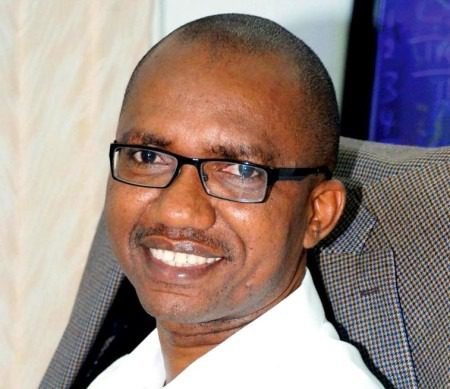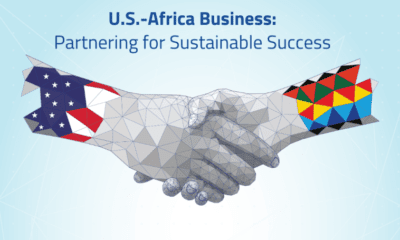National Issues
How Nigeria’s Youth Bulge Can Become A Demographic Dividend -By Fortune Eromosele
The government should create employment and economic opportunities, provide educational and health facilities and combat poverty in order to ensure that the bulging youth population translates into economic growth and development.

Youth bulge has become a common phenomenon in most developing countries. Accounting for 70 per cent of the country’s population, it is no contention about how numbers speak volumes for a country, society and organisation.
The United Nations in July, released the 2022 World Population Proposals. The report projected that global population will reach the eight billion mark by 2050 and that India will surpass China as the most populous country in the world with a whopping 1.66 billion people.
Nigeria, according to the projection, will be the fourth most populated country on earth with 375 million people, with youths accounting for about 262 million of the population. What does this mean for Nigeria? How does Nigeria then react to this youth bulge? Is Nigeria’s youth bulge a bane or boon?
Whether we are going to have a demographic dividend or demographic bomb, will depend solely on the nation’s willingness and readiness to harness the country’s youth demographic potentials. However, the inappropriate response on the issue, will spell doom for the nation.
Nigeria’s economic growth potential with the youths
The challenges facing Nigerian youths ranges from the problem of youth unemployment, limited access to educational and lack of economic opportunities, lack of access to basic education, high HIV/AIDS prevalence rate to high poverty rate.
Contrary to expectations, increase in the population of the youth may undermine development if the challenges facing the youths are not addressed. Many of our youths tend to search for greener pastures because policies put in place by the government may have stifled the working and staying power of the youths.
Over the years, Nigeria has continued to depend on diaspora remittances, in 2020, Diaspora remittances accounted for $17.21bn representing four percent of Nigeria’s Gross Domestic Product in 2020.
Similarly, International Migration Institute (2021) revealed that yearly remittances from migrant Nigerians abroad are estimated to be about US$ 5 billion. Adhikari et al. (2021) also added that the remittances from Nigerians abroad has increased in 2019 to US$ 25 billion, which is five percent of the country’s gross domestic product and four times Nigerian foreign direct investment earnings.
This is even as the World Health Organization, said, 50 percent of Nigeria’s population are willing to relocate abroad should they have the opportunity.
About 60 percent of a country’s population ought to be productive. Currently Nigeria’s population stands at 217, 079, 601 according to “Worldometer,” aa at August 25, 2022. With the youths accounting for 70 percent of the 217 million, which stands at a huge 151 million youths, and 42 percent of the 70 percent are under the age of 15.
With this data, one can body say Nigeria’s economic growth or doom, relies solely on the youths. These youths if left unskilled, unproductive, will cause a great burden for society.
Youth Empowerment and STEM Education
Youth empowerment for every country in the world, remains a weapon of mass development. A country having its youths not empowered, is a country waiting for disaster. Youth empowerment cannot be overemphasised aa it creates a platform for cultivating creative cultures that would boom the economy.
An excellent skill for empowerment is the STEM education. STEM Education in simple terms is a teaching approach in four major disciplines, namely; Science, Technology, Engineering and Mathematics, which is in short “STEM.”
This program, if implored in our school curriculums, would go a long way in equipping young people to solve problems around the world.
However, STEM education goes beyond the four walls of a classroom, it gives people skills that make them more employable and ready to meet the current labour demand. It encompasses the whole range of experiences and skills.
Meanwhile, STEM education cannot be the only tool for youth empowerment, other tools could fall in place, like entrepreneurship, apprenticeship, skill acquisition.
A major look into this factor will bring about poverty eradication, improved standard of education, good governance, employment creation, crime reduction and national security.
Nigeria has Numerous economic benefits with its youth bulge — World Bank
The World Bank Country Director for Nigeria, Shubham Chaudhuri, on his part, said numerous economic benefits awaits Nigeria with its youth bulge.
This is as he urged the federal government to take advantage of its youth bulge, saying that it reduces pressure on the government and reduces crime.
He said, “Nigeria, like many other sub-Saharan African countries, is young and growing and that’s where the potential is, but in order to realize it, you have to be able to invest in the human capital of children and provide them with economic opportunities.
“Families choosing to have fewer children but investing more in the human capital of each child, then helping these children as they enter their working age. As they become 18 years of age, they must have economic and life opportunities in realizing their full potential. Nigeria has a young and growing population and half of Nigerians are below the age of 17.
“Just to put that in perspective, if you take a country like Italy or even the United State of America, where half of Americans are over the age of 40, that’s what we call an aging population.
“But if we take that one step back and ask how families would make those decisions and be aware of what kind of choices they have. It’s about keeping adolescent girls in school. Globally, no single factor is more important in ensuring the welfare of children and ensuring that children have the kind of investments in their human capital and then education of their mothers.”
Youthful age structure holds momentum — NPC
Chairman of, National Population Commission, NPC, Nasir Isa-Kwarra, noted that the current youthful age structure holds the momentum to drive a sustained increase of Nigeria’s population growth into the future, without immediate interventions.
He said, “Nigeria is among the eight countries globally sustaining the world population growth and leading in Africa. Current projections at 216 million people, who represent 216 million opportunities; if aptly harnessed, could transform the development landscape of our nation.
“The people’s age 13 structure favours the young people (those below the age of 30 years) who make up over 70 percent of our population.
“The situation calls for attention on providing quality and sustained investments in health care, particularly in family planning of women and adolescents, transformative and relevant education for growing numbers of children and young people that fits into current and future jobs requirements, housing and decent employment/jobs across successive administrations and governance.”
Call to Action
The government should create employment and economic opportunities, provide educational and health facilities and combat poverty in order to ensure that the bulging youth population translates into economic growth and development.
Nigerian youths are inherently innovative and passionate but will require the right environment to evince their creativity, work and become solution to our many challenges.
Therefore, the development of youth should be made to occupy the zenith of the totem pole of priorities. Non-state actors should be incentivized in expanding the space for employment, mentorship and apprenticeship.
There’s the need for continuity in policy implementation that is orientated towards youth development and by extension national development.

















